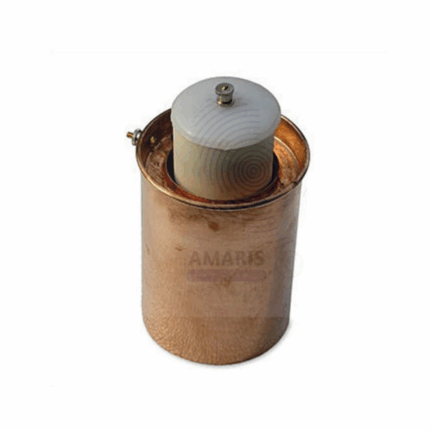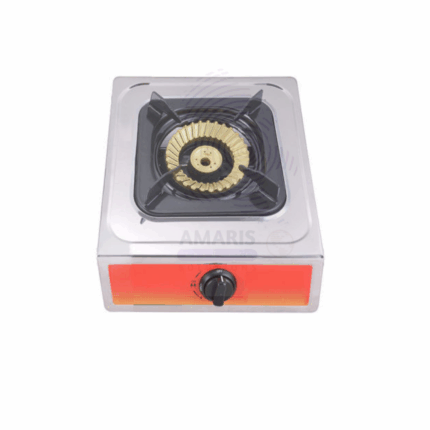

Deflagrating Spoon
The Deflagrating Spoon is a laboratory tool used to heat small quantities of substances in open flame, commonly for combustion and deflagration experiments. It features a small bowl attached to a long metal handle, typically made of stainless steel or heat-resistant alloy. Its design allows safe handling of reactive materials during high-temperature reactions. It is widely used in laboratory and industrial applications involving combustion demonstrations and chemical testing.
Deflagrating Spoon
Primary Uses
- Laboratory Applications
• Used to demonstrate combustion of elements like sulfur, magnesium, and phosphorus
• Essential in teaching deflagration principles and oxidation-reduction reactions
• Applied in qualitative inorganic analysis involving heated sample reactions
• Utilized for ignition of flammable chemicals in a controlled lab setup
• Supports thermal decomposition experiments by holding reactive materials over flame
Secondary Uses
- Industrial Applications
• Used in materials testing labs for flame behavior studies of chemical samples
• Employed in quality control labs for combustion performance testing of small solids
• Supports small-scale research in pyrotechnic or energetic material behavior
• Can assist in reactive metal testing under high-temperature environments
1. Basic Identification Attributes
Tool Type: Combustion/Reaction Handling Tool
• Material: Stainless steel or heat-resistant alloy
• Design: Small bowl with a long metal handle
2. Physical & Chemical Properties
- Thermal Resistance: High; suitable for direct flame contact• Corrosion Resistance: Resistant to acids and bases commonly found in labs• Dimensions: Varies; spoon size typically 1–2 cm diameter
• Weight: Lightweight for ease of handling
3. Safety & Hazard Attributes
- Heat Hazard: Metal can remain hot after flame exposure; use tongs or gloves• Breakage Risk: Low, but avoid bending the rod or overloading the spoon• Chemical Compatibility: Avoid use with highly volatile substances
4. Storage & Handling Attributes
- Storage Conditions: Store in a dry, clean drawer or on a lab utensil rack• Handling Precautions: Use insulated gloves or tongs when retrieving post-flame
5. Regulatory & Compliance Attributes
- Compliance: Meets general laboratory safety equipment standards• Material Certification: Can include ISO or ASTM standards (manufacturer dependent)
6. Environmental & Health Impact
- Reusability: Reusable; designed for long-term use• Disposal: Recyclable metal• Environmental Risk: None when used and disposed of correctly
Safety Handling Precautions
• Always allow the spoon to cool before handling directly
• Wear heat-resistant gloves and eye protection during use
• Avoid overfilling the spoon with material to prevent splattering
First Aid Measures
• Burns: Cool affected area with water immediately; seek medical attention for severe burns
• Inhalation of Smoke: Move to fresh air and consult medical help if irritation persists
• Contact with Hot Metal: Flush area with cool water; cover with sterile bandage
Firefighting Measures
• Fire Hazard: Tool itself is non-flammable but used with flammable materials
• Extinguishing Media: Use CO₂, dry chemical, or foam extinguishers if surrounding fire occurs
• Special Precautions: Remove reactive chemicals from area when extinguishing fire


 Preservatives(food)
Preservatives(food) Flavor Enhancers
Flavor Enhancers Acidulants
Acidulants Sweeteners
Sweeteners Antioxidants
Antioxidants Colorants(food)
Colorants(food) Nutraceutical Ingredients (food)
Nutraceutical Ingredients (food) Nutrient Supplements
Nutrient Supplements Emulsifiers
Emulsifiers
 Collectors
Collectors Dust Suppressants
Dust Suppressants Explosives and Blasting Agents
Explosives and Blasting Agents Flocculants and Coagulants
Flocculants and Coagulants Frothers
Frothers Leaching Agents
Leaching Agents pH Modifiers
pH Modifiers Precious Metal Extraction Agents
Precious Metal Extraction Agents
 Antioxidants(plastic)
Antioxidants(plastic) Colorants (Pigments, Dyes)
Colorants (Pigments, Dyes) Fillers and Reinforcements
Fillers and Reinforcements Flame Retardants
Flame Retardants Monomers
Monomers Plasticizers
Plasticizers Polymerization Initiators
Polymerization Initiators Stabilizers (UV, Heat)
Stabilizers (UV, Heat)
 Antifoaming Agents
Antifoaming Agents Chelating Agents
Chelating Agents Coagulants and Flocculants
Coagulants and Flocculants Corrosion Inhibitors
Corrosion Inhibitors Disinfectants and Biocides
Disinfectants and Biocides Oxidizing Agents
Oxidizing Agents pH Adjusters
pH Adjusters Scale Inhibitors( water)
Scale Inhibitors( water)
 Antioxidants(cosmetic)
Antioxidants(cosmetic) Emollients
Emollients Fragrances and Essential Oils
Fragrances and Essential Oils Humectants
Humectants Preservatives
Preservatives Surfactants(cosmetic)
Surfactants(cosmetic) Thickeners
Thickeners UV Filters
UV Filters
 Fertilizers
Fertilizers Soil Conditioners
Soil Conditioners Plant Growth Regulators
Plant Growth Regulators Animal Feed Additives
Animal Feed Additives Biostimulants
Biostimulants Pesticides (Herbicides, Insecticides, Fungicides)
Pesticides (Herbicides, Insecticides, Fungicides)
 Active Pharmaceutical Ingredients (APIs)
Active Pharmaceutical Ingredients (APIs) Excipients
Excipients Solvents(pharmaceutical)
Solvents(pharmaceutical) Antibiotics
Antibiotics Antiseptics and Disinfectants
Antiseptics and Disinfectants Vaccine Adjuvants
Vaccine Adjuvants Nutraceutical Ingredients (pharmaceutical)
Nutraceutical Ingredients (pharmaceutical) Analgesics & Antipyretics
Analgesics & Antipyretics
 Analytical Reagents
Analytical Reagents Solvents(lab)
Solvents(lab) Chromatography Chemicals
Chromatography Chemicals Spectroscopy Reagents
Spectroscopy Reagents microbiology-and-cell-culture-reagents
microbiology-and-cell-culture-reagents Molecular Biology Reagents
Molecular Biology Reagents Biochemical Reagents
Biochemical Reagents Inorganic and Organic Standards
Inorganic and Organic Standards Laboratory Safety Chemicals
Laboratory Safety Chemicals Specialty Laboratory Chemicals(Special Laboratory Equipment)
Specialty Laboratory Chemicals(Special Laboratory Equipment)
 Demulsifiers
Demulsifiers Hydraulic Fracturing Fluids
Hydraulic Fracturing Fluids Scale Inhibitors(oil)
Scale Inhibitors(oil) Surfactants(oil)
Surfactants(oil) Drilling Fluids
Drilling Fluids
 Dyes and Pigments
Dyes and Pigments Bleaching Agents
Bleaching Agents Softening Agents
Softening Agents Finishing Agents
Finishing Agents Antistatic Agents
Antistatic Agents
 Admixtures
Admixtures Waterproofing Agents
Waterproofing Agents Sealants and Adhesives
Sealants and Adhesives Curing Compounds
Curing Compounds Concrete Repair Chemicals
Concrete Repair Chemicals Anti-Corrosion Coatings
Anti-Corrosion Coatings
 Surfactants(cleaning)
Surfactants(cleaning) Builders
Builders Enzymes
Enzymes Solvents (Cleaning)
Solvents (Cleaning) Fragrances
Fragrances
 Electronic Chemicals
Electronic Chemicals Catalysts
Catalysts Lubricants
Lubricants Photographic Chemicals
Photographic Chemicals Refrigerants
Refrigerants Automotive chemicals
Automotive chemicals Pyrotechnic Chemicals
Pyrotechnic Chemicals
 Biodegradable Surfactants
Biodegradable Surfactants Bio-based Solvents
Bio-based Solvents Renewable Polymers
Renewable Polymers Carbon Capture Chemicals
Carbon Capture Chemicals Wastewater Treatment Chemicals
Wastewater Treatment Chemicals
 Pigments
Pigments Solvents(paint)
Solvents(paint) Specialty Coatings
Specialty Coatings Binders/Resins
Binders/Resins Additives
Additives Driers
Driers Anti-Corrosion Agents
Anti-Corrosion Agents Functional Coatings
Functional Coatings Application-Specific Coatings
Application-Specific Coatings
 Fresh Herbs
Fresh Herbs Ground Spices
Ground Spices Whole Spices
Whole Spices Spice Blends
Spice Blends Dried Herbs
Dried Herbs
 Leavening Agents
Leavening Agents Dough Conditioners
Dough Conditioners Flour Treatments
Flour Treatments Fat Replacers
Fat Replacers Decoratives
Decoratives Preservatives(baking)
Preservatives(baking)
 Plasticizers & Softeners
Plasticizers & Softeners Reinforcing Agents
Reinforcing Agents Adhesion Promoters
Adhesion Promoters Vulcanizing Agents
Vulcanizing Agents Antidegradants
Antidegradants Blowing Agents
Blowing Agents Fillers & Extenders
Fillers & Extenders Accelerators & Retarders
Accelerators & Retarders




















